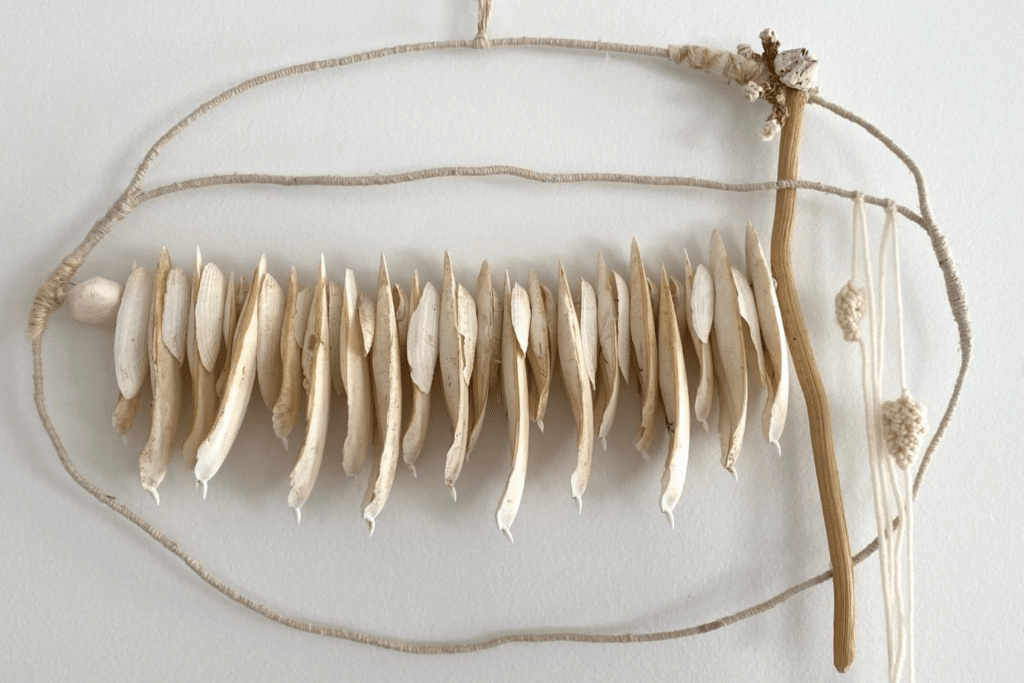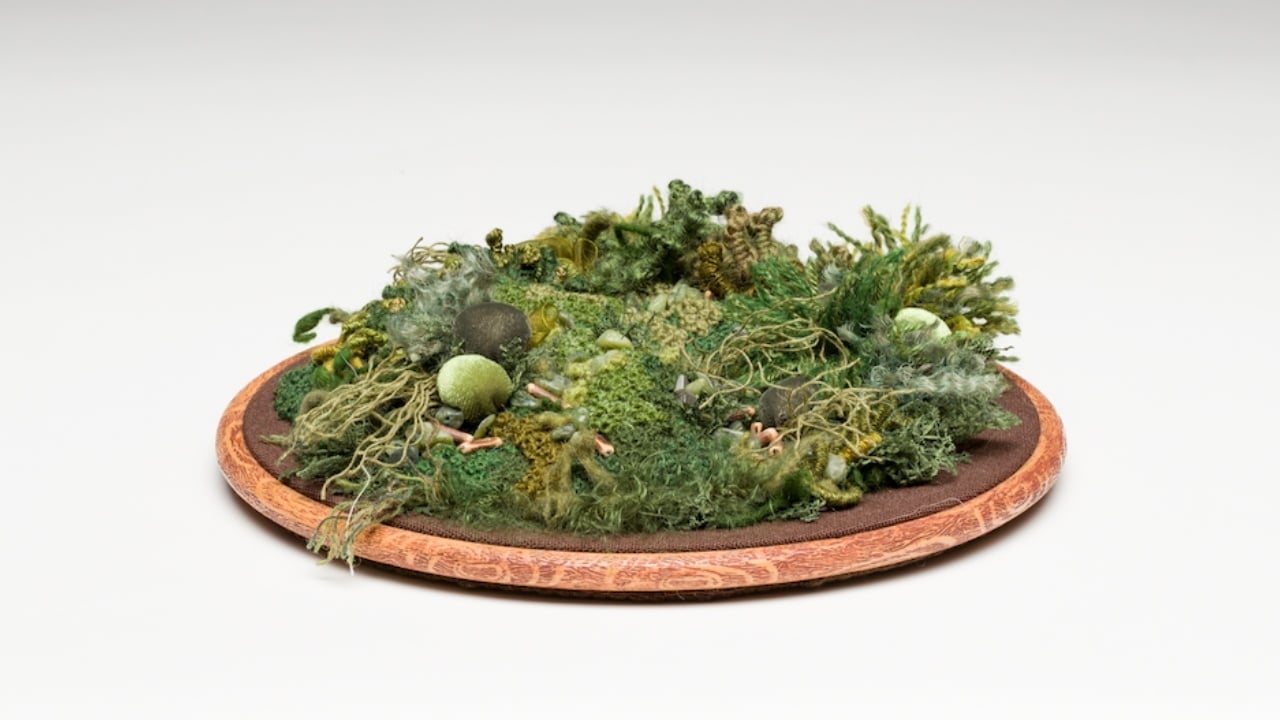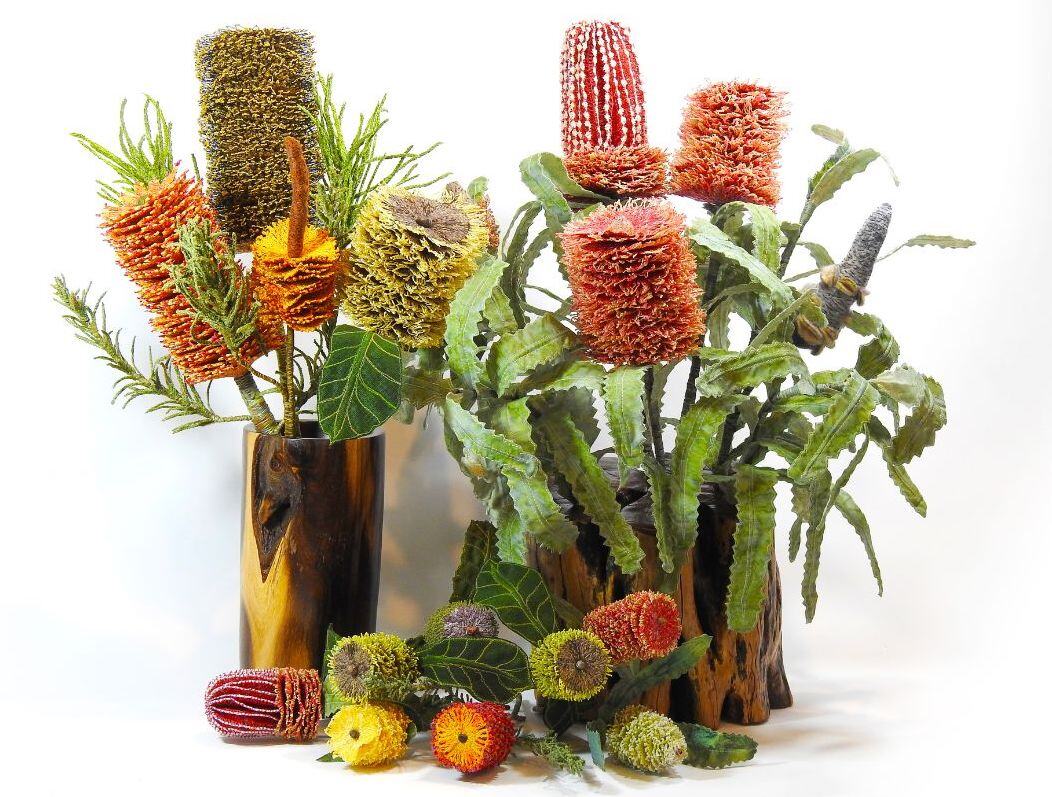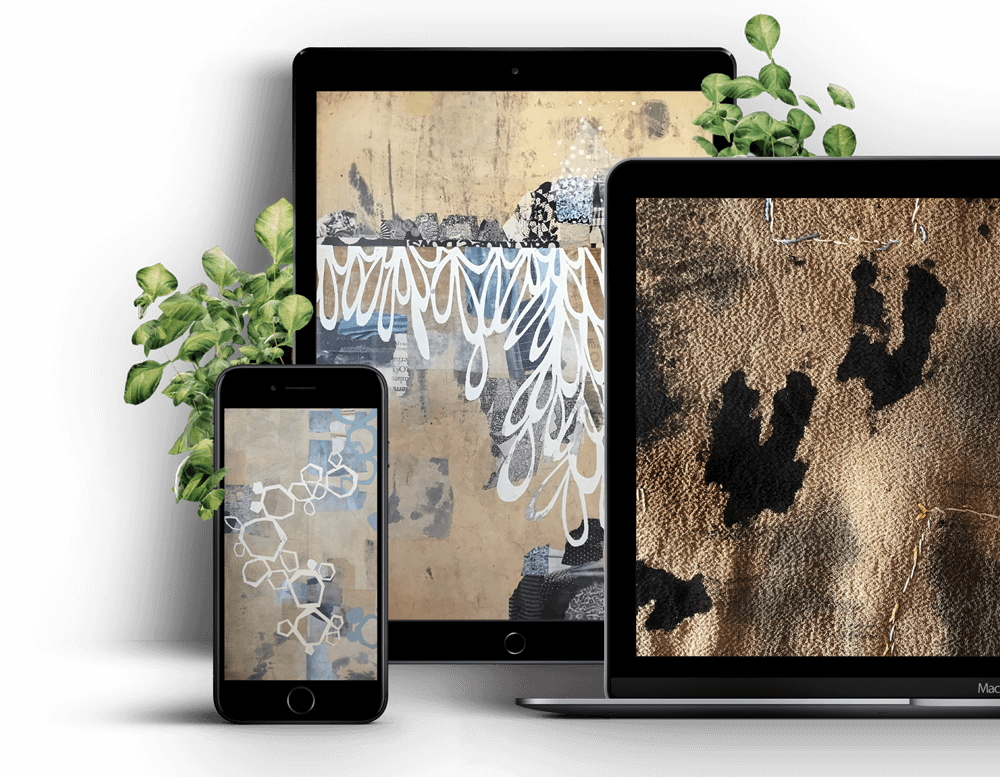Kelcie Bryant Duguid
From shooting jackets to the world of fibre arts, artist Kelcie Bryant Duguid talked to Fibre Arts Take Two about her journey to become a creative professional.
Kelcie’s Friday Feature Artist Interview can be found at the bottom of this page.
From a degree in education to studies in pattern production and bridal wear, Kelcie Bryant Duguid’s work stretches from expertly crafted garments to vessels and framed works. She selects from a wide variety of materials, often repurposing salvage textiles, and uses techniques accumulated over years of Visual Arts and textile training. Kelcie’s art practice keeps her asking questions exploring, discussing, engaging the viewer and challenging the narrative that is being taught or told. Her work often displays simplicity and clarity of meaning that, upon closer inspection, holds deeper and more complex ideas and messages.
Kelcie joined Fibre Arts Take Two from her Sydney home to share some of her stories.
Jackets and bats
Growing up on a farm in the regional NSW town of Tamworth played an integral role in developing Kelcie’s skills with a needle, “My mum sewed’, she says, “and she taught me how to sew, and I did textiles at high school in years nine and ten and then again in years 11 and 12. But my dad was a shooter. We had a stone fruit orchard, and there was a quota of flying foxes that you could shoot because they damaged the fruit.”
Kelcie’s father and his friends needed the right type of jackets for when they set out to shoot troublesome bats, ”I got the job of making those for some of his friends,” she says, “You needed a padded shoulder for the gun to go against when you shot and had to have deep pockets, and that was a job I got paid for, so that was pretty exciting.”
Outside of bat shooting garments, Kelcie still worked with a needle, “I made my own clothes once I was a teenager and was interested in all of that side of things,” she says, “I always made my own clothes, and if you saw something in a book, and you couldn’t afford it, well, you figured out how to do it, and then you’re able to wear it as you wanted to. I think when I grew up anyway, all the mums sewed. So it was part and parcel of your little thing that everybody did.”
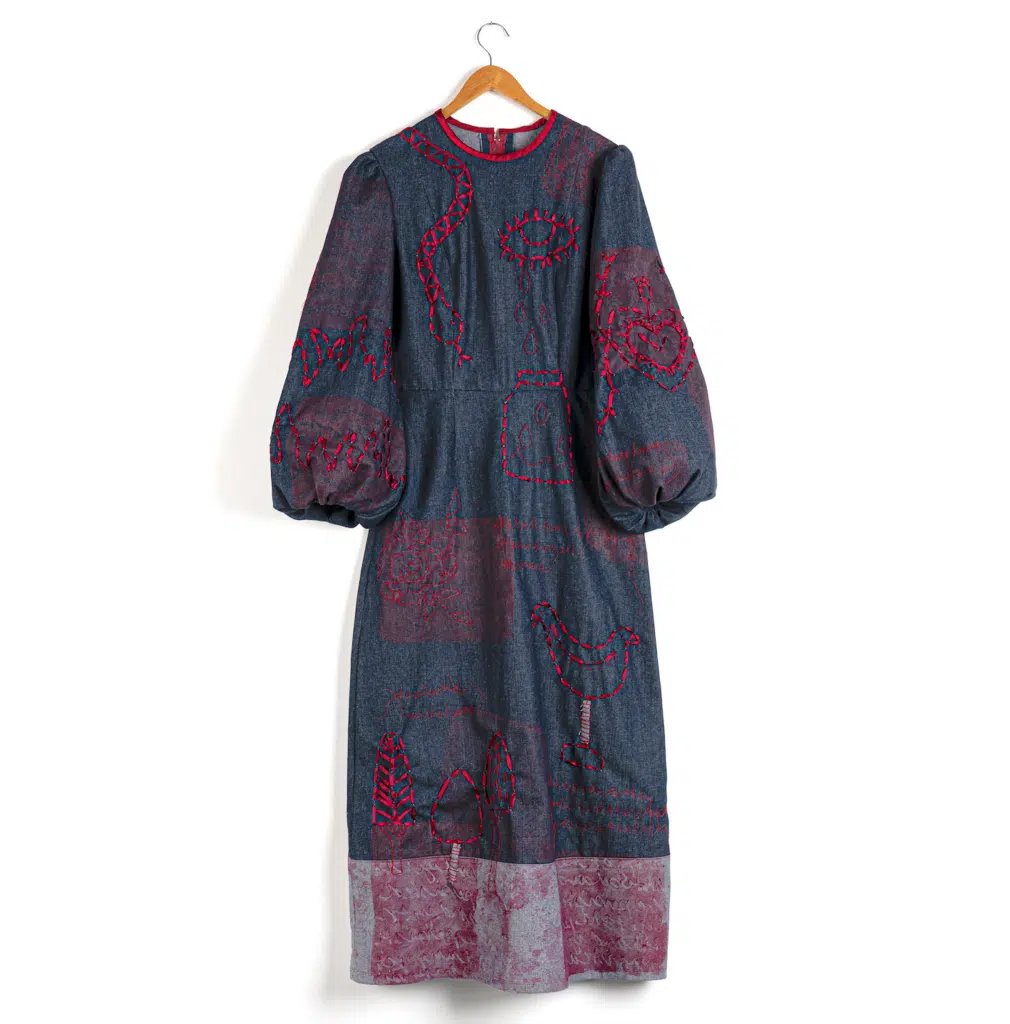
Becoming a nominal artist
When Fibre Arts Two asked Kelcie when she started to feel comfortable being called an artist, she talked about the time her young daughter was ill. During this time, Kelcie found herself spending a lot of time in waiting rooms, “I thought, well, this is an opportunity,” she says, “while I’m going to appointments and things I can be indulging in things that I wouldn’t have time to do if I was at work. So that was a catalyst. We’d go to something, and my daughter would introduce me and say, ‘This is my mother. She’s an artist’. I go, ‘Well, I make art’. But then, after a while, I had my work included in some bigger sort of exhibitions, and I had a solo, and then I sold some work, and I think that was when I started to feel more comfortable.”
Dresses
Kelcie believes that a dress holds significant cultural meaning, “The first time I exhibited garments”, she says, The theme for the exhibition that I was in was looking at ‘looking backwards, looking forwards’. I decided to make dresses that were inspired by my childhood, looking at girls and how you travel through life.
The dress represents women, and the feminine, and that journey that we take, so we’re girls, and then we reach adulthood, and then we go and have our careers and our adventures, and perhaps we get married, and we might have children become mothers, and then all those sorts of relationships. Dresses are things that girls tend to wear. It doesn’t mean you can’t wear pants or any of that sort of thing, but it’s a very recognisable sort of silhouette, so it works well for sending those messages.”
You never know when inspiration is going to strike
Kelcie has found a creative way to turn that bastion of creativity, the hot shower, into a workroom, “You’re having a shower,” she says, “you’re enjoying the warmth of the shower, you’re washing hair or whatever. And all of a sudden, the idea will come to me. So I’ll steam up the glass door, and I’ll draw on the glass door, and then I’ll quickly just come back, write down what it is. You never know when inspiration is going to strike.”
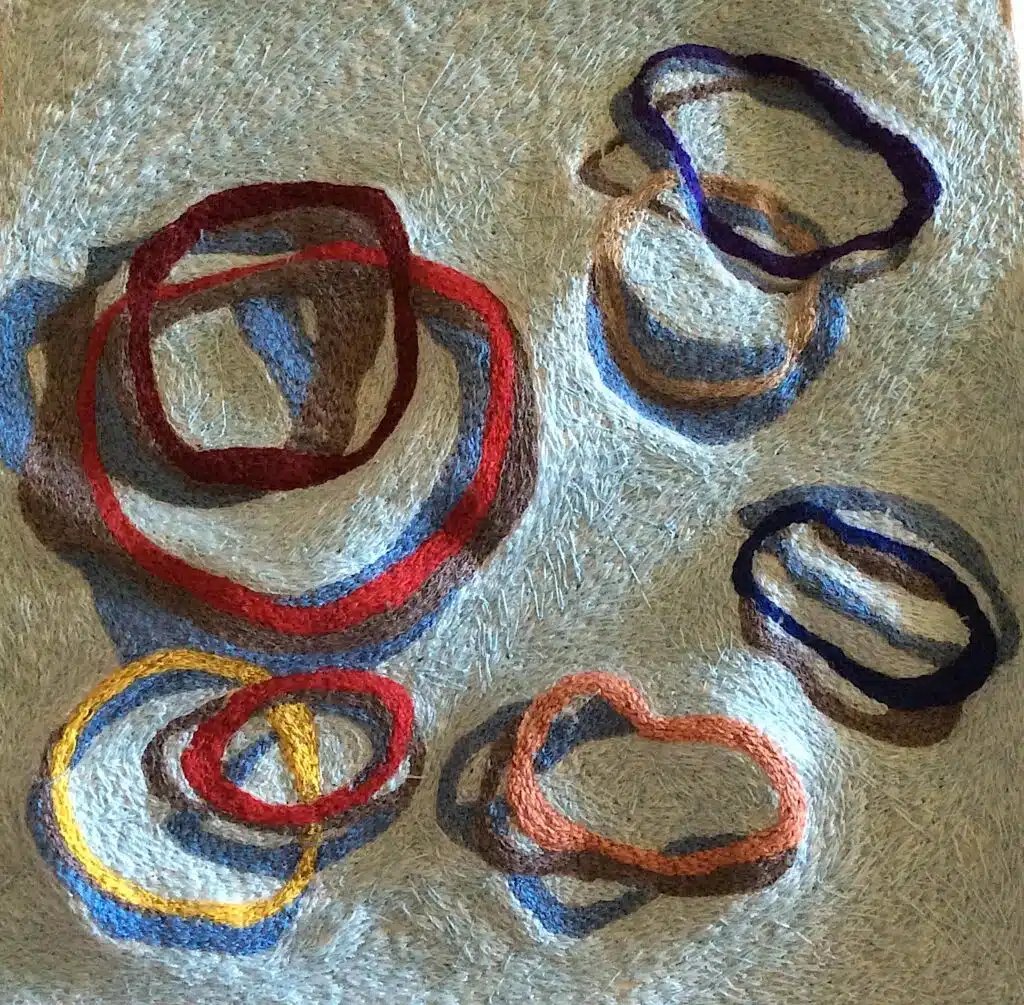
Words
Kelcie is highly inspired by language and words, “Words are very important”, she says, “words are very powerful, and they shape people’s ideas and their values, and they create culture and society. I’d been frustrated with what I was hearing in the media or whatever it happened to be, so I did find making art about those things was quite cathartic. When you have a bad day, and you write it down, or you write a letter, you move it past you into some other space. So some of my work starts like that.”
Essential Worker
Kelcie’s piece Essential Worker also drew its inspiration from words, “I was listening to a lot of the language that was being spoken about people who are needing to work and how they’re on low pay,” I did it in about two days says, “It was early in the pandemic in Australia, so we were seeing all the imagery from overseas, and we were hearing about how so many people were dying, and people who were working, were dying, because they didn’t have the proper PPE, and I was really upset by that, and I knew what I wanted to do. I had already been stitching on plastic for a while. A lot of my work does start with words, so I made up the pattern for a medical smock and just machine embroidered it with the words saying the same things over and again, so some of it says, ‘Stay at home, Save the economy’, and it has a little disposable mask on it. ”
Staying original
Kelcie likes to make sure she maintains her originality when she is creating. “If I’m making work for something,” says Kelcie, “I don’t look at other artists who might work in the same medium. I don’t look at their work. I just take a wide berth while working on my things so that it has my own voice.”
All the same, Kelcie knows it is essential not to repeat the work of others, “When I did some work with QR code pieces,” she says, “I thought lots of people would have dealt with that subject area and done the same thing so I did a lot of research, and nobody had. Then sometimes you will come up with an idea, and it has been done, and it’s been done almost the same in the same footprint as what you’re going to do, so you just have to say, ‘well, that’s not going to happen.’ So when I have an idea, and I’m really thinking about something, I’ll check to see that. That there’s not something else that looks the same.”
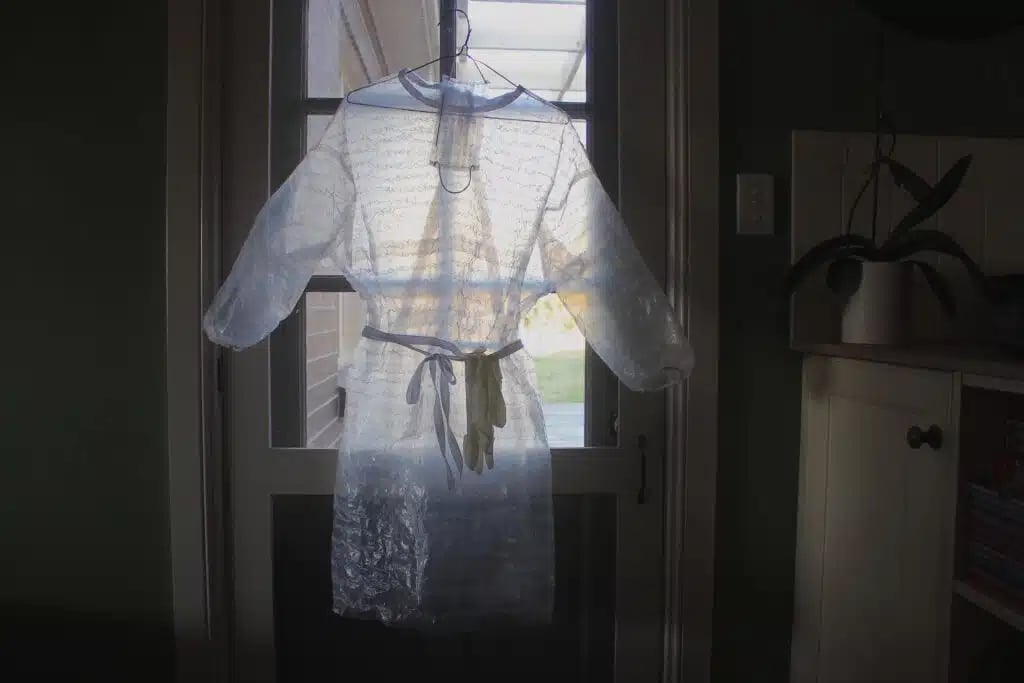
About the artist
Kelcie Bryant-Duguid is a visual artist living in the greater Sydney area of New South Wales, Australia. Her art practice is multi-disciplinary, with her primary focus on encaustic mixed media and textiles.
Kelcie’s work is a response to the environment, events and issues that resonate with her, with the themes of memory, family, relationships, place and belonging constantly revisited in her work.
Kelcie’s work is sometimes political. She uses her art practice to give a voice to broader community and societal issues that are of importance to her.
Notifications
Join Our Newsletter
OUR YOUTUBE CHANNEL
View our interviews and more on our Youtube channel!
OUR FACEBOOK GROUP
Join our Community and stay updated with our upcoming announcements!
